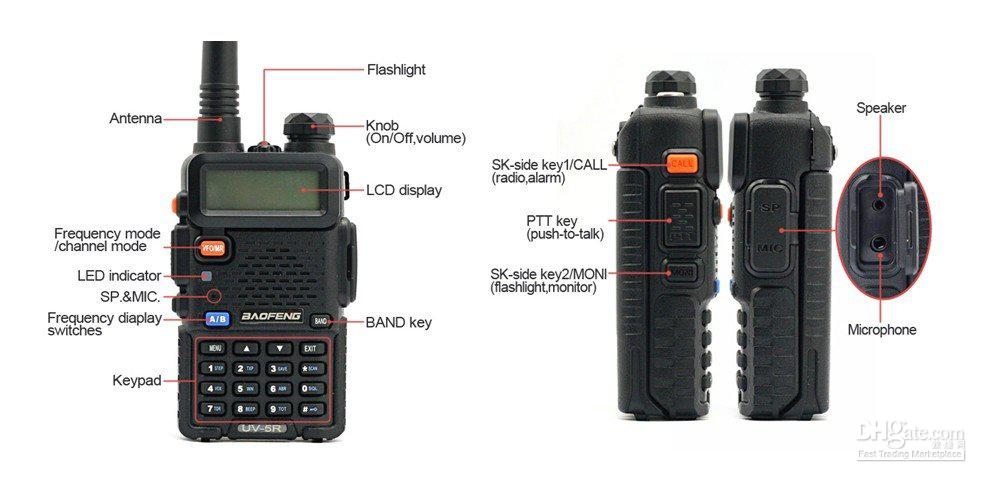
(Continued from Part 1.)
Antennas, Expedient Techniques, and Construction Methods
A radio tech should be sure to have several SWR meters, one of which is for the 11-meter band, and have the ability to improvise and construct antennas of all kinds — even if it is only a dipole. For CB, an expedient 1/2 wave dipole (216-inches long) made from coaxial cable propagates much better than a 52? long 1/8-wave ground plane CB antenna. CBs have a very long radio wave as compared to UHF/VHF radio and thus require much taller and larger antennas to propagate to their full potential. In a future disaster, there will be lots of vintage mobile CBs dug out of storage and pressed into service. Yet without an antenna, these radios will not be serviceable.
In a disaster, there will be a serious lack of even the most popular and widely used PL259 and BNC Male connectors. So buy them inexpensively and in bulk now, as well as other connectors and cables. Most radios have a SO-239 (aka “UHF”) connector for the antenna cable to attach to the radio. I have many times improvised by constructing an inner pin with folded wire and solder, or no solder and secured the cable to the radio using the shield from the coaxial cable and stout wire wrapped around the shielding and the threads of the SO239 panel connector. The SWRs checked properly. However “lossy” the connection, it works. This is the kind of improvisation that will be needed. It will be apropos for times when using RG59 or RG6 72-ohm coaxial television cable as this cable has an outer shielding that is most often made with aluminum instead of steel or copper and hence cannot be soldered. Crimp-on connectors can be used with standard television cable. But solder-type PL259 connectors can be used with RG59/RG6, if there is RG58/RG8x cable reducer available. Simply bend the outer shielding back over the forward end of the RG58 reducer/insert and tighten it well.
Improvised Antennas
With continued use in the field, the most likely part to damaged or lost will be the antenna. The antenna is a cruical part of any radio. The following is a short list of my favorite field expedient antennas that I have personally constructed and used.
The least expensive way to mitigate the failure of antennas and batteries for the inexpensive and non-weather-tight Baofeng UV5R, is to simply purchase two of them for every person, for each year of operation anticipated. For the Baofeng, and any other handhelds that have an adapter to a SO239 (UHF) fitting, we can use a PL259 cable connector to make an improvised replacement antenna, or an antenna needed for operating on a particular band that the provided factory or aftermarket antenna is not tuned for. Typically, commercial antennas are tuned for the Ham bands. But if we’d like to operate on GMRS, we can make our own antennas designed for those frequencies.
Expedient Homemade Antennas For Handhelds
Using a section of a stainless steel whip antenna, acetylene welding rod, or even a coat hanger wire, use electrical tape to insulate and keep the wire centered in the body of the PL259 connector, and insert the wire into the end of the PL259 connector, and solder it in place. An epoxy that does not contact conductive materials could be used to center and isolate and secure the whip better than simply using tape. Then tune the antenna using an SWR meter by simply attaching the antenna directly to your SWR’s SO239 panel connector.
We can also use solid or stranded flexible copper, or steel wire to make a crude 1/4-wave dipole antenna that propagates better than most commercial antennas. Adding a ‘tiger tail’ to the metal base of the antenna, or attaching it to the metal body or frame of the transceiver, makes it a proper dipole that performs surprisingly well. The SWR may be either unknown or excessive, yet as it is a full-length 1/4 wave antenna, it will propagate better than a short-in-length antenna that has a very low SWR. Using the low power setting, it will transmit (and receive) 8 miles, loud and clear. This antenna was simply cut to length using the formula 486/frequency.
For short transmissions, the SWR is usable and the antenna is better than nothing, and a better solution than having no radio at all. Over the last decade, I have used several Baofengs as signal generators to tune perhaps a hundred antennas. These Baofengs experience repeated extreme high SWRs and became warm in the hand, yet they have never failed. This was an unintentional torture test and the UV5Rs endured it without a reduction in signal output. I am confident that in extremis, that the Baofeng UV5R can withstand consistent abuse from a very high SWR. Ideally, power down when using crudely made and untuned antennas, and keep the transmissions very short and the UV5R will take the punishment of a 3:1 or higher SWR. When the radio become warm to the touch, stop transmitting. The duty cycle of these radios is short to begin with. High SWRs accelerate the heating up of the finals.
Most antennas I cut will have a SWR close to 3:1, or less, without tuning at the design frequency. A high SWR does not necessarily mean that the antenna won’t propagate the signal well. A poorly-designed antenna with a low SWR would not perform as well. Excess signal loss with a well-designed and constructed antenna is acceptable. As I’m writing this, I am listening to a transceiver that is conveniently suspended by a stranded copper wire that is also its antenna. When a call is answered, I conveniently reach for the suspended radio, turn my head and speak directly into the mic. I have a Kenwood TK270 that was purchased for $5.00, but it came without an antenna and it had a bad battery. I found a metric bolt and washer that fits the antenna base, and attached the wire in this way. This odd adaptation has proven to be fortuitously convent as I literally live in my Ham shack, and space is scarce. As its battery has failed, it is powered directly from a 12vdc battery bank via a step-down converter to the 7.5 volts DC power that this Kenwood requires. Total investment: $5 bucks, plus 50 cents for the converter, and two drops of solder. The end result is 5 watts ERP and a top-notch signal.
Expedient External Antennas
Another improvised antenna is a dipole made from coaxial cable. Simply strip the outer insulation, separate the outer shield at the base of the eventual dipole, and remove the inner wire. Use the outer shield and the inner wire as the two legs of a dipole. The cable should have the appropriate connector for the transceiver. The cable length can be as long or as short as needed.
The classic ‘jungle antenna’ can be made using a SO-239 UHF panel connector, a BNC male, or SMA Female connectors, or no connector at all. I’ve standardized on the PL259/SO-239 connectors, since that is the most common connector, and it is the easiest to work with. Any one of these connectors can be the basis for dipole or Jungle antenna that is essentially an improvised wire 1/4-wave ground plane. A 1/4-wave will be the easiest to tune, and have the greatest bandwidth or range of frequencies that have a usable SWR of 2:1 or less. Typically this is 8 to 10 megahertz of bandwidth. There are many good online tutorials on this type of antenna on the internet. Here is one example.
The J-pole antenna can be made from a variety of materials. A down-and-dirty J-pole can be made using aluminum, EMT, copper tubing, heavy gauge solid copper wire, or even threaded galvanized water pipe without the use of solder. The greater in diameter the tubing or wire, the greater will be its bandwidth. Simply bend (or piece together) the tubing into the J shape, cut it to the specified length, and attach the coaxial cable with screws or automotive hose clamps during tuning. This antenna requires a balun that is 5 loops of coaxial cable 3 to 4 inches in diameter. It should not be grounded, but insulated from the mast. This provide a modest gain of 1.5 to 3 dbi and is easily installed on a mast. The bandwidth is however only 5 megahertz wide.
The slim Jim is the better antenna as it has 8 MHz of bandwidth, but it is not a design that is easily improvised in the field with limited resources. My favorite J-pole was made from soft 1/4? copper tubing that is currently rolled up inside a 6 gallon bucket and stored with spare transceivers. It can easily be straightened and mounted on a wooded pole, or long stick with wire ties, or cordage and attached to a pack if necessary. The antenna will bend, but it will not break making it an acceptable antenna for the purpose. Again, a J-pole antenna does not require a ground plane.
(To be continued tomorrow, in Part 3.)

